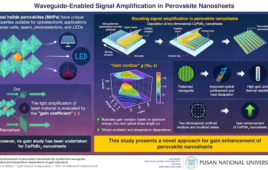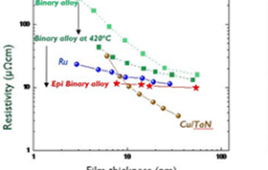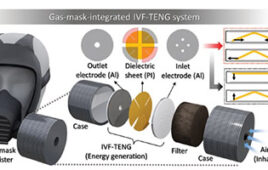 On the search for high performance materials for applications such as gas storage, thermal insulators, or dynamic nanosystems, it is essential to understand the thermal behavior of matter down to the molecular level. Classical thermodynamics average over time and over a large number of molecules. Within a three dimensional space single molecules can adopt an almost infinite number of states, making the assessment of individual species nearly impossible.
On the search for high performance materials for applications such as gas storage, thermal insulators, or dynamic nanosystems, it is essential to understand the thermal behavior of matter down to the molecular level. Classical thermodynamics average over time and over a large number of molecules. Within a three dimensional space single molecules can adopt an almost infinite number of states, making the assessment of individual species nearly impossible.
Now researchers from Technische Universität München (TUM) in Germany and Linköping University (LIU) in Sweden have developed a methodology, which allows to explore equilibrium thermodynamics of single molecules with atomic resolution at appreciable temperatures. The breakthrough study is based on two pillars: a technology which allows to cage molecules within two-dimensional nanopores and extensive computational modelling.
Along with the Chair of Molecular Nanoscience and Chemical Physics of Interfaces at TU München, Prof. Dr. Johannes V. Barth, PD, Dr. Florian Klappenberger developed the method to produce high-quality metal-organic networks on a silver surface. The network forms nanopores which restrict the freedom of movement of adsorbed single molecules in two-dimensions. Using scanning tunneling microscopy the researchers were able to track their motions at different temperatures with sub-nanometer resolution.
Parallel to the experiments, the researchers worked with sophisticated computer models to describe the temperature dependence of the dynamics of these single trapped molecules. “We have applied state-of-the-art supercomputer calculations to understand the interactions and energy landscape determining the motion of the molecules,” says Jonas Björk of Linköping University.
Comparing experimental and modeled data the scientists unraveled that under certain conditions the integral theory approaches a simple projection of the molecular positions in space. This approach is central to statistical mechanics, but has never before been challenged to reproduce an experiment, due to the practically infinite molecular positions and energies one needed to consider without the nanoscale confinement.
“It was extremely exciting to employ two-dimensional networks as a confinement strategy to reduce the available conformational space of a single molecule, like a chaperone does with a protein, says Dr. Carlos-Andres Palma, the lead author of the study. “In analogy to biology, such form of confinement technology has the potential to establish sensors, nanomachines, and possibly logics controlled by and made of molecular distributions.”
Applying their knowledge of characteristic equilibrium configurations, the researchers carefully modulated the nanopore, thus making a single molecule write letters of the alphabet such as L, I, and U, just by fine-tuning the temperature.
The research was funded by the European Research Council (ERC Advanced Grant MolArt) and the Swedish Research Council. The Swedish National Supercomputing Center provided supercomputing resources. The research group of Professor Barth is member of the Catalysis Research Center (CRC) of the TUM.
Release Date: February 26, 2015
Source: Technische Universität München




